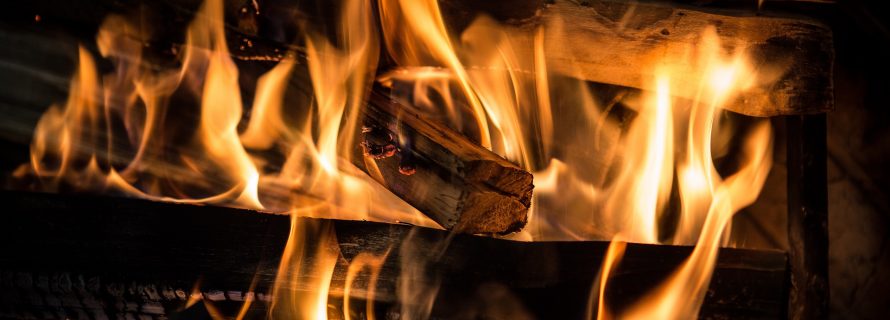Basic rules for cleaning chimneys and fireplaces

How to Clean a Chimney: A Project Guide for Homeowners
For homeowners with a wood-burning fireplace, keeping the chimney clean is an essential part of routine maintenance. Regular cleaning can help prevent chimney fires and house fires. It may even make your home more energy-efficient. In this helpful guide, we’ll walk you through how to clean a chimney and whether it’s a DIY home improvement project or if you should hire a pro.
Signs of a Dirty Chimney
If you notice any of the following, it’s likely time to give your chimney a thorough cleaning:
- Color Change: If the chimney is clean, the flame will be light orange. A saturated dark orange hue indicates that it’s time to clean up the chimney.
- Creosote Buildup: As you burn wood, this flammable, tar-like byproduct can accumulate on the inside walls of your chimney.
- Smoke: If you notice smoke flowing into the room instead of up into the chimney, it could be a sign of a blockage or obstruction.
- Soot: Dark powder falling down from the chimney into the fireplace is another sign that the chimney has poor airflow.
- Strong Odors: Creosote buildup in the chimney can also cause a strong, acidic smell to emanate from your firebox.
- Black Smoke: The smoke coming out the top of your chimney should be white or gray if your chimney and fireplace are working properly.
- Difficulty starting fires: The restricted airflow of a dirty chimney can also make it harder to get a fire going.
The Importance of a Clean Chimney
There are several important reasons you shouldn’t neglect chimney cleaning.
Energy Efficiency
One of the biggest advantages of having a fireplace is the reduced energy costs associated with heating a home. However, if your chimney isn’t working properly, it can make your fireplace less effective at keeping your home warm.
Fire Prevention
Not only will creosote buildup make your fireplace less efficient, but it’s also extremely flammable. Left too long, creosote in the chimney can cause a chimney fire or even a house fire.
Air Quality
When you burn wood in your fireplace, the chimney gives the smoke a path to escape without flowing into your home. A dirty chimney can allow carbon monoxide to build up in your home, lowering the indoor air quality.
How to Clean a Chimney
Now that you understand the importance of chimney cleaning, let’s look step by step at how to clean a chimney.
Step 1: Gather Your Chimney Cleaning Tools and Supplies
Chimney cleaning is a messy job, so it’s important to have the appropriate safety gear. You’ll need the following protective equipment:
- Safety glasses
- Dust mask
- Gloves
- Long sleeves
You’ll also need these tools to complete the cleaning:
- Chimney cleaning brush (Note: be sure to use a brush with bristles a little wider than the diameter of the flue liner)
- Wire brush
- Flashlight
- Plastic sheet or drop cloth
- Duct tape
- Ladder
- Shop vacuum
Step 2: Prepare the Area
When you clean the fireplace and chimney, dust and debris will likely blow into the room. Remove any furniture around the fireplace and lay down a drop cloth to make it easier to clean up. Opening your windows can also help prevent debris from coming out of the fireplace by regulating the air pressure in the room.
Step 3: Clear the Firebox
Remove any unburnt wood, ash, or debris from the fireplace. It isn’t necessary to give the firebox a thorough cleaning at this stage since cleaning the flue will drop debris into it. Open the damper and, if possible, remove it to give it a good cleaning.
Step 4: Clean the Chimney Flue
You can either clean the chimney from the bottom up or from the top of the chimney down. If you clean from the roof, remove the chimney cap and cover the fireplace opening by taping up some plastic sheeting.
Cleaning from inside the house means you won’t have to climb onto the roof. However, your fireplace has to be big enough for you to fit into. You should also be prepared for debris to fall down over you.
Using your chimney brush, either from the fireplace or on the roof, scrub the chimney flue up and down, adding rods as you go to extend the brush.
Step 5: Fireplace Cleaning
Use your shop vacuum to clean up any dust and debris you dislodged during cleaning. Scrub any spots you missed around the fireplace with your wire brush.
Professional Chimney Cleaning Services from Alure Home Solutions
Knowing how to clean a chimney yourself can make it a rewarding DIY project. However, it requires some specialized tools, and you may need to climb onto your roof. Hiring a certified chimney sweep will most likely yield better results and is a safer option for chimney cleaning. For the best results, contact Alure Home Solutions today for a fast and easy chimney cleaning consultation!
- Additions and New Construction
- All Exteriors
- Alterations
- Basements
- Bathrooms
- Customer Service
- Customer Stories
- Decks
- Design & Planning Show
- DIY
- Doors
- Educational Resources
- Extreme Makeover Home Edition
- Fashion Show
- General Remodeling
- Green Living
- Handyman Home Services
- Home Decor
- Home Entertainment
- Home Improvement
- Home Improvements
- How to Tips
- In The Community
- Kitchens
- Off-the-Wall Remodeling Stories
- Remodeling
- Resources
- Roofing
- Siding
- Social Media
- Sunrooms
- Tips & Tricks
- Trends
- Windows

